
|   |

|   |
Symbol of love: Radha-Krishna ki Bansuri - Manjari Sinha e-mail: manjari@sinha.com Photos: Deepak Krishna July 11, 2023 The divine flute of Krishna became the symbol of love between Radha and Krishna. The mere mention of his flute brings alive images of their mythical love tales on the bank of river Yamuna in Vrindavan. Based on their immortal love story, 'Radha Krishna ki Bansuri' was premiered by Rag Virag Educational and Cultural Society at Kamani Auditorium, Delhi, recently. Founded in 2002 by Kathak exponent and Guru Punita Sharma, herself a talented disciple of Guru Jaikishan Maharaj, Rag Virag is known for their classical and contemporary group presentations along with imparting training in classical music and dance. 'Radha Krishna ki Bansuri' is their latest dance drama production. The storyline begins with 'Bansuriwala', the divine flute player, receiving his magical flute from none other than Lord Shiva. The dance drama goes on to explore how this flute becomes the symbol of love between Radha and Krishna even when Krishna leaves his flute behind with Radha in Vrindavan and goes to Dwaraka. 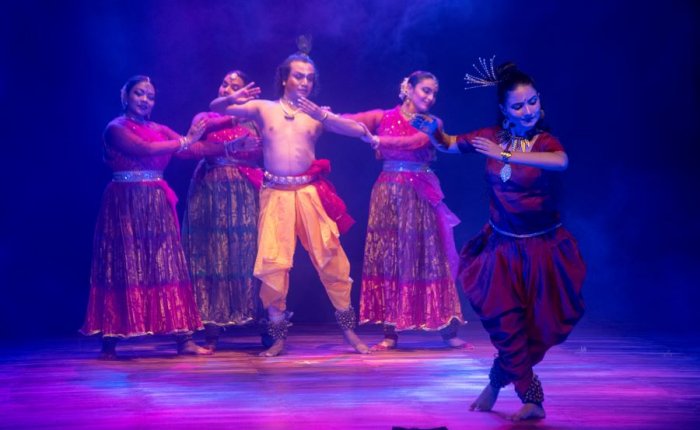 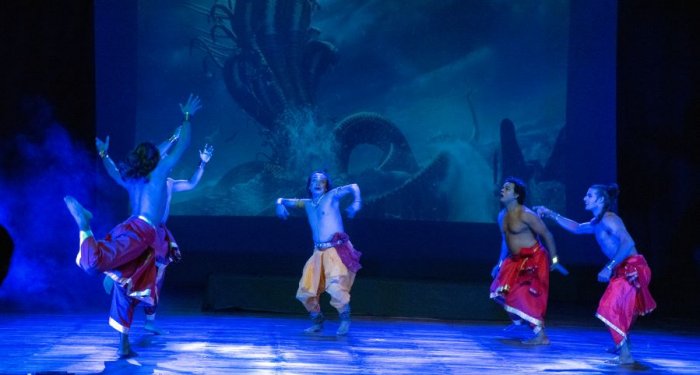 The thoughtful use of the 'Shiva Panchakshara Stotra' and the Kathak Kavitta when Lord Shiva blesses and gifts the coveted flute to Krishna in Gokul, naming him 'Bansuriwala', made an impressive start with the male dancers impersonating Shiva with his 'Urdhva Tandav' in vigorous movements of Mayurbhanj Chhau. Raga Basant Lahera, the musical refrain, set to Teentala for the female dancers depicting the vibrant season of spring, went well with the Tode, Tukde, Paran etc, and the delicate grace of the flute, which binds together Radha and Krishna as a symbol of their eternal love. The story takes a turn when Krishna abandons the flute symbolizing love and picks up the Sudarshan Chakra as the King of Dwaraka although he leaves his flute in Radha's care before leaving for Dwaraka. Waiting for her beloved Krishna for long, Radha decides to go to Dwaraka herself to check on his well-being. On arriving at Dwaraka, when she finds Krishna holding the Sudarshan Chakra in place of the flute, Radha addresses Krishna as Dwarikadheesh. When Krishna assures her that he is the same Kanha for her, she reminds him of the days spent in Vrindavan. The audience watches in flashback the Makhan Chori Leela of the child Krishna, when he used to steal butter along with his friends, the Gwala Bals. When caught and cornered by mother Yashoda, he pleads his innocence enacting the Surdas Pada "Maiya mori main nahin makhan khayo". The 'Lehera' in Tilang for the dance, is apt for the song. Ultimately when the child Krishna opens his mouth to convince her, mother Yashoda is astonished to see the whole of Brahmaand, the entire universe inside his small mouth, and realizes his divinity. Another one was the Kaliya Daman Prasang when the adolescent Krishna is playing the ball game with his friends on the banks of river Yamuna. The ball goes into the river where the poisonous snake Kaliya lives. He defeats him and dances on his crown. Radha also reminds him of how his flute mesmerized Radha and other milkmaids who loved him so dearly. And then tells Krishna that he used to play his flute with all his fingers and brought everyone together through music. Leaving the flute for the Sudarshan Chakra, which is held on just one finger but symbolizes hatred and destruction, is not worth it, and she asks him, 'What did you get in return?' Then Krishna explains the ultimate truth "Paritranaya sadhunam, Vinashay cha dushkritam, Dharma sansthapanarthaya sambhavami yuge yuge!" 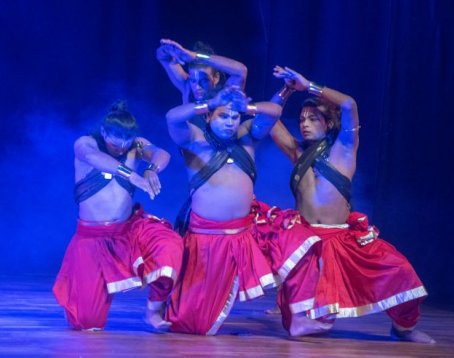
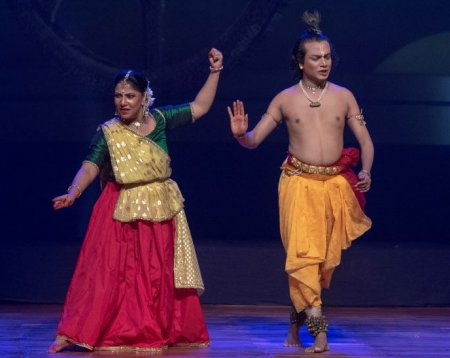
The story also depicts Krishna's love for the flute and Radha's jealousy towards it, through group choreography where Punita Sharma in the role of Radha, Partha Mandal as Krishna and Muskan Nagpal as Bansuri, did full justice to 'Radha Krishna ki Bansuri'. The music for this scene in raga Hamsadhwani is set to Jhaptal of ten beats cycle incorporating the Paran-Aamad 'dhatak thunga' and other intra-forms of Kathak. The other dancers comprised Chand Khan as Shiva, Raj Nath as Kaliya Nag, Sumedha Singh as Yashoda, and Vanshika as the charming child Krishna. The group also had Pranshi, Ritika Rawat, Parishi Sharma, Sunaina, Ramchandra Gautam, Sonu Kumar, Sukriti, Rashika, Gaurika Arora, Komal, Gaurika Dhamija, Priyanshi, Priyanka, Ritika, Anuradha, Kuhu, Mehreen, Dhvani, Alankrita, Khushi, Kuhu, Aakriti, Charvi and Vanshika. Music by Madho Prasad gave the production a professional touch with his melodious compositions in appropriate ragas, sargams, taranas, and melodious musical scores for different scenes. The use of tarana though, may be questioned because this musical form was not there in those times of Krishna-Radha. Light design by Milind Srivastava augmented the captivating choreography by Punita Sharma. The dance-drama was followed by 'Thung-Thunga', the popular composition of Pt. Birju Maharaj, by a group of cute little dancers of 'Prathama', the first year students of the institution. If this had been presented before the dance drama, most of the audience who walked away could have enjoyed and encouraged the budding performers as well! 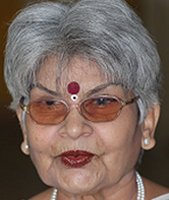 Manjari Sinha has an M.A. in Sanskrit and Music, and trained in vocal, tabla, sitar and Kathak dance. She has regular columns in national dailies as a music and dance critic. |